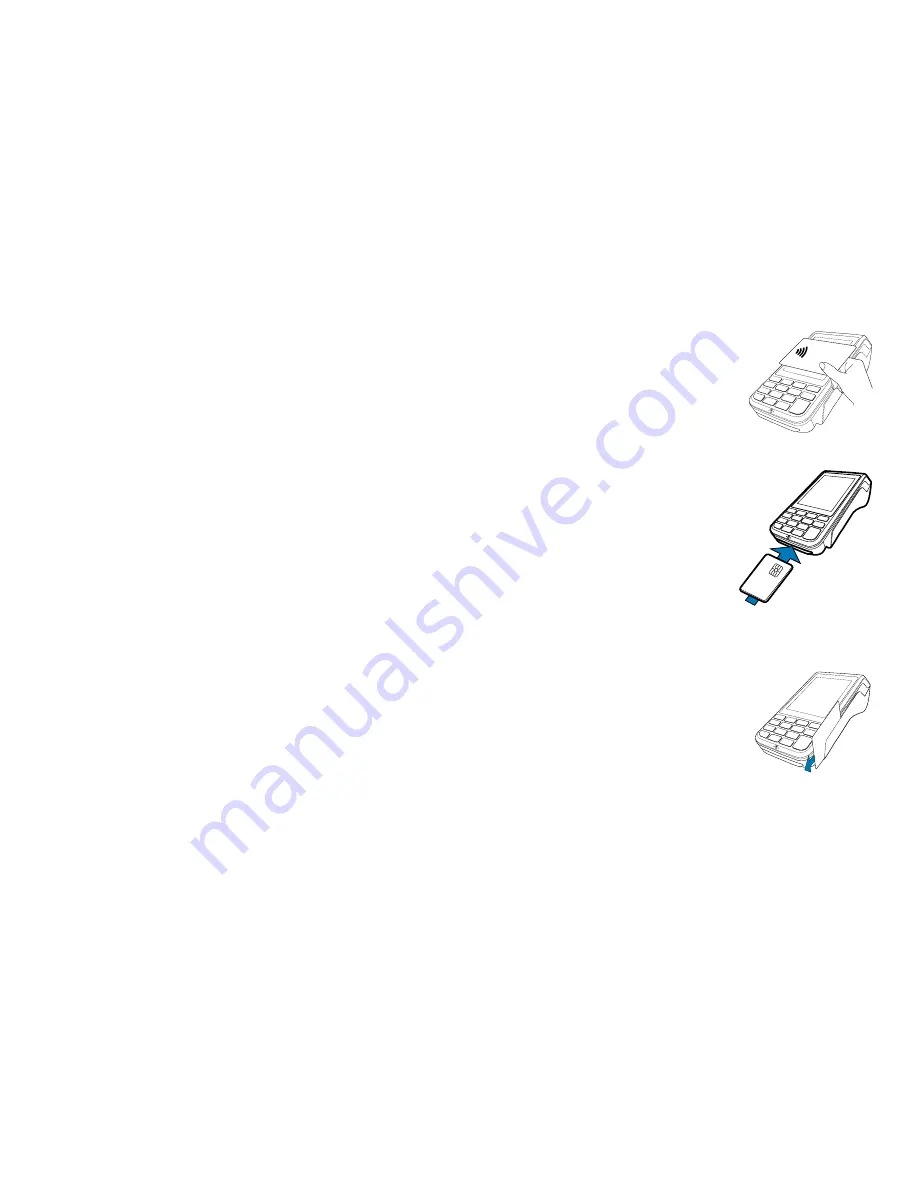
BANK OF MELBOURNE EFTPOS 1i TERMINAL USER GUIDE
6
BANK OF MELBOURNE EFTPOS 1i TERMINAL USER GUIDE
7
2.8
Terminal configuration
Once the EFTPOS 1i terminal is connected, the Merchant ID and Terminal ID will need to be
entered into the PC-EFTPOS EFT Client�
This is done via the Control Panel Your POS Vendor or PC EFTPOS support desk may be able to
assist you if required�
You can use the function on the keypad from the terminal idle screen to configure the primary
communications method� To do this, press the # key at the idle screen and enter 998 to proceed
to communications selection�
The following configuration options will be displayed:
1�
Bluetooth Base:
View the details of the connected Bluetooth base hardware, and press “1”
to unpair from the base so that your terminal can be paired with another base�
2�
Bluetooth Base Version:
View the firmware version of the connected Bluetooth base, and
press “2” to update the base firmware if required�
3�
POS Details:
View details on the POS interface methodology (such as RS232)�
4�
SIM:
Press “4” to verify the SIM details (if installed)�
5�
PSTN Details:
Press “5” to verify the PSTN phone number (if in use)�
6�
Power off timer:
Press “6” to configure the power-off timer duration�
7� (not in use)�
8�
Internal Modem:
Press “8” to configure which communications method should be used
to communicate with the bank in the event that POS Communications are down� The
available options are GPRS, PSTN, and None�
Note that these communications method configurations are for the handset communicating
directly with the host (via GPRS or PSTN) in the event that the POS-to-Bank link is down�
The host communications (GPRS or PSTN) will only be used in the event that the POS
communications to the bank are (and/or the terminal is in standalone lite mode), and this process
should be seamless during a transaction�
3.0 Procedures
3.1
Conducting Contactless Transactions
The EFTPOS 1i terminal supports contactless transactions�
Instructions:
1� Your customer should position the contactless enabled card
above the terminal screen�
2� Await the confirmation beeps before removing the card� The
screen status LEDs will also indicate the progress of the read�
3.2
Inserting a Chip Card
The EFTPOS 1i terminal supports credit or debit card
transactions�
The chip card reader is located at the bottom of the terminal
below the keypad�
Instructions:
1� Position the chip card with the chip facing upward and
toward the terminal�
2� Insert the chip card into the chip card reader slot as far as
it will go in a smooth, continual motion�
3� The card should remain inserted in the terminal until
the transaction is complete and the terminal prompts to
remove it�
4� If there is an error with reading the chip on the card the terminal may prompt you to swipe the
card�
3.3
Swiping a Magnetic Stripe Card
The EFTPOS 1i terminal supports credit or debit card
transactions�
The magnetic stripe reader is located on the right hand side of
the terminal�
Instructions:
1� Position a magnetic stripe card in the card reader with the
stripe facing inward, towards the keypad�
2� To ensure a proper read of the magnetic stripe card, the
merchant should insert the magnetic stripe card from the
top of the unit�
3� Swipe the card smoothly through the magnetic card reader�
4� If there is no response from the terminal, or CARD ERROR message is displayed, swipe the
card again� You may be required to swipe faster or slower�
5� If you swipe a chip card the terminal will prompt you to insert the card�





















